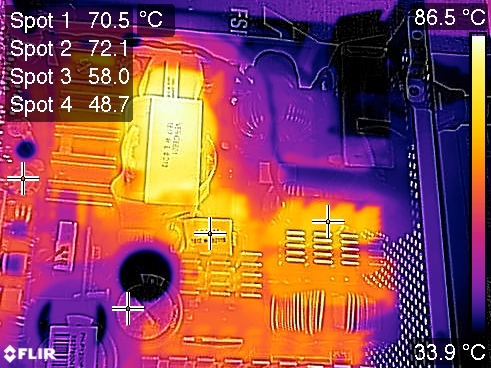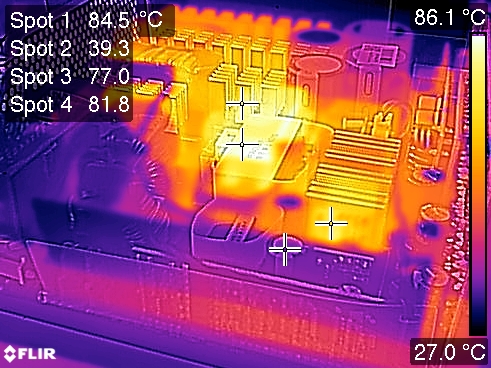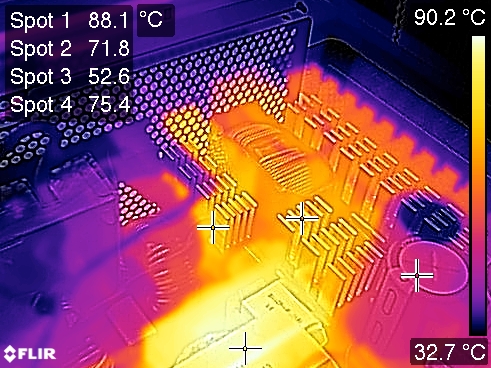NZXT E Series 850W PSU Review: An Analog Platform With Digital Enhancements
Why you can trust Tom's Hardware
Cross-Load Tests & Infrared Images
Our cross-load tests are described in detail here.
To generate the following charts, we set our loaders to auto mode through our custom-made software before trying more than 25,000 possible load combinations with the +12V, 5V, and 3.3V rails. The load regulation deviations in each of the charts below are calculated by taking the nominal values of the rails (12V, 5V, and 3.3V) as point zero. The ambient temperature is between at 30°C (86°F) to 32°C (89.6°F).
Load Regulation Charts



Efficiency Chart
From 140W to around 590W on the +12V rail, NZXT's E850 delivers more than 90% efficiency (even with increased load on the minor rails). But it would be nice to see a region, even a small one, with efficiency exceeding 92%.
Ripple Charts




Infrared Images
We apply half-load for 10 minutes with the PSU's top cover and cooling fan removed before taking photos with our modified FLIR E4 camera that delivers 320x240 IR resolution (76,800 pixels).











The bulk caps stay close to 50°C, while the polymer caps on the DC-DC converters go up to 60°C. In general, temperatures inside the E850 stay pretty low, so there's plenty of headroom for a more relaxed fan profile.
MORE: Best Power Supplies
MORE: How We Test Power Supplies
Get Tom's Hardware's best news and in-depth reviews, straight to your inbox.
MORE: All Power Supply Content
Current page: Cross-Load Tests & Infrared Images
Prev Page Protection Features & DC Power Sequencing Next Page Transient Response Tests
Aris Mpitziopoulos is a contributing editor at Tom's Hardware, covering PSUs.
